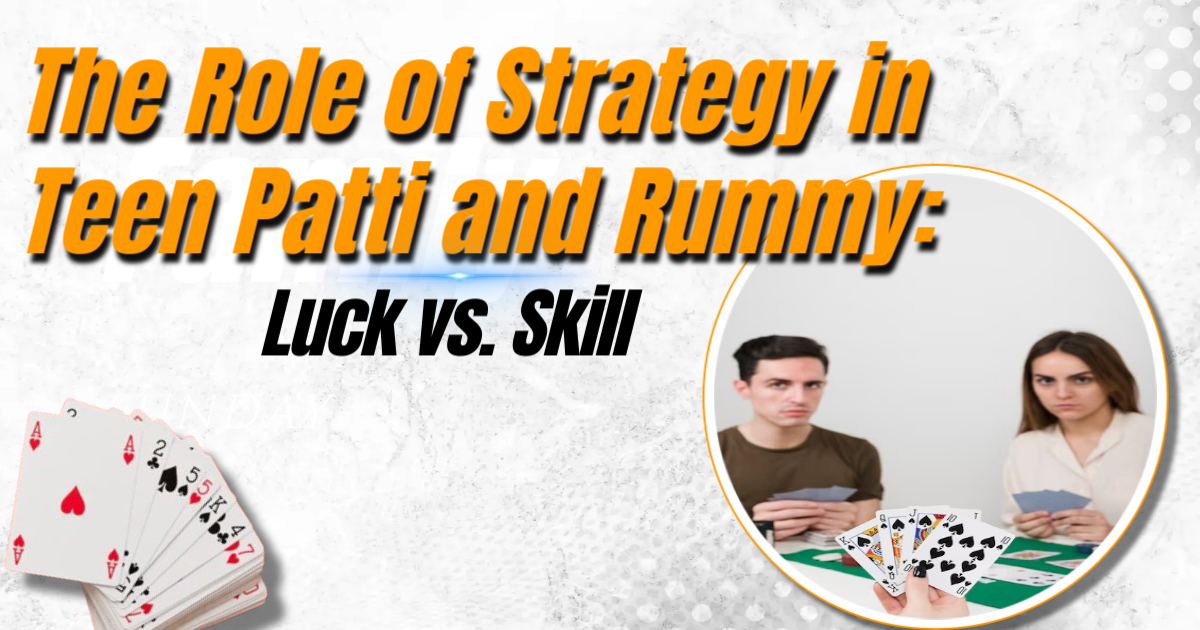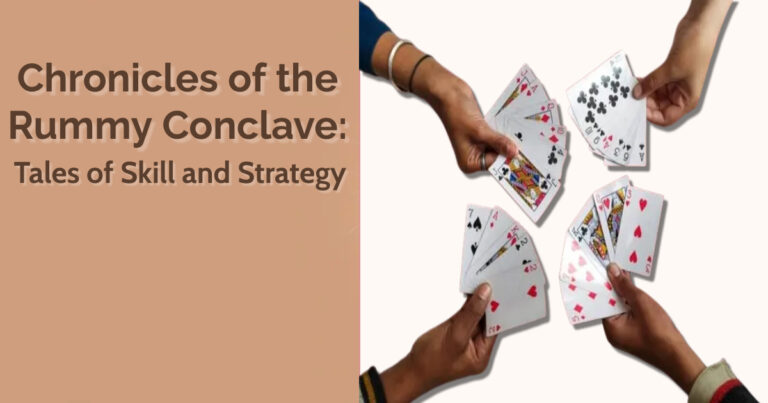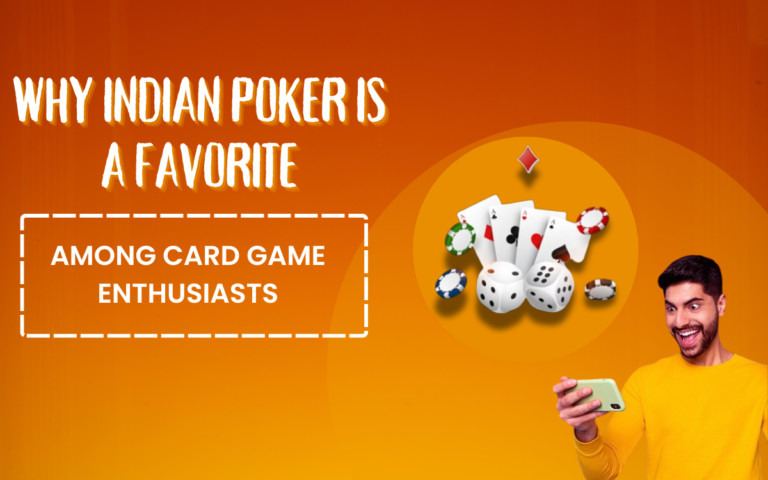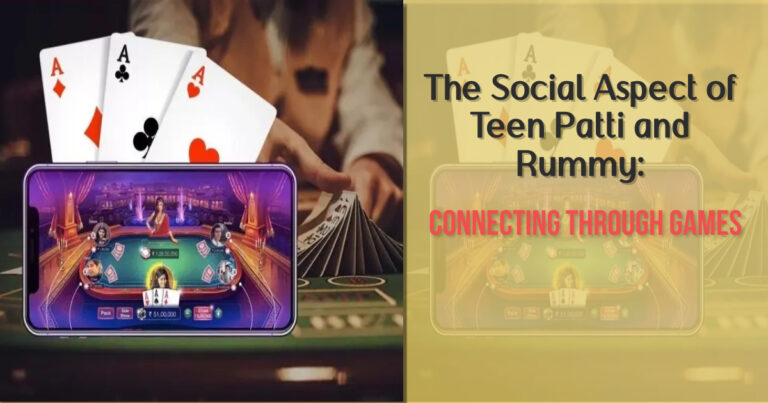The Role of Strategy in Teen Patti and Rummy: Luck vs. Skill
Card games have long captivated players, blending skill and strategy with chance in ways that both thrill and challenge. Among the most popular card games in the Indian subcontinent are Teen Patti and Rummy, each offering unique dynamics that test a player’s skill while simultaneously relying on elements of luck. Understanding the balance between luck and skill in these games can lead to sharper strategies and more consistent success. This essay explores the role of strategy in Teen Patti and Rummy games, analyzing the interplay between luck and skill in both games.

1. Teen Patti: A Game of Luck with Strategic Layers
Teen Patti, often referred to as the Indian version of poker, is a game of probability and psychology. Played with a 52-card deck, it usually involves three to six players who bet on who holds the best hand. While the cards a player is dealt are purely determined by chance, the manner in which they play those cards introduces a layer of skill and strategy.
Luck in Teen Patti
Luck is undeniably a significant factor in Teen Patti. The game’s very foundation is built on the randomness of card distribution. Players have no control over the cards they are dealt, and strong or weak hands are distributed purely by chance. Winning the game can sometimes come down to the blind luck of receiving a superior hand, such as a trio (three of a kind) or a straight (a sequence of consecutive cards of different suits). This element of randomness makes Teen Patti Stars appealing to casual players, as it ensures that anyone has a chance to win, regardless of experience.
However, relying solely on luck would make the game feel more like a lottery than a competitive game. This is where strategy comes into play.
Skill and Strategy in Teen Patti
Though the cards are dealt by luck, how a player approaches the game after receiving their cards is what distinguishes a novice from an expert. The primary elements of strategy in Teen Patti include betting, bluffing, and observational skills.
- Betting Strategy: Deciding when to bet, fold, or raise is crucial in Teen Patti. A skilled player knows when to bet aggressively, even with a weak hand, and when to fold a relatively good hand. Proper risk assessment and understanding betting patterns are key components of skill and strategy.
- Bluffing: Like in poker, bluffing is a central skill in Teen Patti. A player can win the game without having the best hand by convincing their opponents that they do. Bluffing effectively requires not only a strong understanding of the psychology of other players but also the courage to take calculated risks.
- Observational Skills: The ability to observe opponents’ behavior, betting patterns, and emotional reactions can provide clues about the strength of their hands. Seasoned players develop a keen sense of when others are bluffing or holding strong cards, helping them make better decisions based on skill and strategy.
In Teen Patti, the combination of luck and skill creates an exciting tension. While anyone can win due to lucky cards, consistently successful players are those who know how to manipulate the game through strategic play, especially when considering the different variations in Teen Patti and Rummy.
2. Rummy: Skill Prevails Over Luck
Rummy, a game involving matching cards of the same rank or sequence, is widely considered a skill-based card game. The goal of Rummy is to form valid sets and sequences from the dealt cards before the opponents do. Unlike Teen Patti, Rummy requires players to actively influence the course of the game through their decisions.
Luck in Rummy
Though skill is the dominant factor in Rummy, luck does play a minor role, particularly at the beginning of the game, making it one of the variants for all ages. The cards a player is initially dealt are based on chance, and receiving a favorable hand can offer a significant early advantage. For example, being dealt cards that are already close to forming sets or sequences gives a player a head start in the game.
However, in contrast to Teen Patti, where luck can be decisive, Rummy minimizes the role of luck as the game progresses. Players draw and discard cards in a way that they control the flow of the game. Thus, even if a player starts with a poor hand, their skill in arranging cards and reading the board can turn the tide in their favor.
Skill and Strategy in Rummy
Rummy is predominantly a game of skill and strategy, requiring players to exercise strategic thinking, memory, and observation. The primary aspects of strategy in Rummy include card arrangement, discarding decisions, and memory.
- Arranging Cards: The ability to arrange cards into sets and sequences efficiently is crucial. Skilled players can quickly assess their hand and identify multiple ways to organize their cards, giving them flexibility in gameplay. Effective card arrangement also involves making calculated decisions about which cards to keep and which to discard.
- Discarding Decisions: Knowing which cards to discard is arguably the most important skill in Rummy. A player must balance improving their own hand while preventing opponents from benefiting from the cards they discard. A skilled Rummy player can anticipate what cards their opponents might need and adjust their discards accordingly, showcasing their skill and strategy.
- Memory: In Rummy, memory plays a significant role in tracking which cards have been picked or discarded. A good memory allows players to make informed decisions about the cards remaining in the deck and the potential hands their opponents are trying to form. Skilled players use memory to avoid giving away valuable cards and to craft strategies that will disrupt their opponents’ plans.
In essence, while luck may influence a player’s initial hand, the majority of success in Rummy comes from making smart decisions and having a strategic mindset.
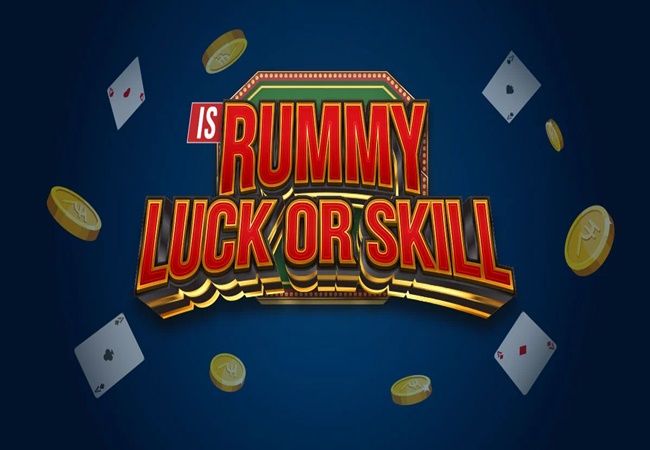
3. Luck vs. Skill: A Comparative Perspective
While both Teen Patti and Rummy involve elements of luck, the balance between luck and skill differs significantly between the two games. Teen Patti is often perceived as a game where luck can have a more immediate impact due to the randomness of card distribution and the opportunity to bluff. On the other hand, Rummy places a much greater emphasis on skill, with success hinging on the player’s ability to arrange cards efficiently and make informed decisions.
In Teen Patti, a player can succeed without the best hand by using psychological tactics like bluffing. This unpredictability makes it exciting and accessible to beginners, as luck can sometimes prevail over skill and strategy. However, as players gain experience, they begin to understand the nuances of betting, bluffing, and reading opponents, which increases the role of skill in long-term success.
In contrast, Rummy is more rigid in its structure and rules, allowing for less reliance on luck. The game rewards those who have a good grasp of strategy, memory, and probability, and it is much harder for a novice to beat an experienced player purely through luck. A skilled Rummy player will consistently outperform less experienced opponents, as the game offers fewer opportunities for chance to override strategy.
4. Conclusion
Both Teen Patti and Rummy offer rich, engaging gameplay that blends luck and skill in different ways, showcasing their history and evolution over time. Teen Patti’s reliance on chance combined with its psychological aspects makes it a thrilling game where strategy is crucial but not always dominant. On the other hand, Rummy places a premium on skill, with success largely determined by the player’s ability to make calculated decisions and track the game’s progression.
Ultimately, whether one favors the excitement of Teen Patti’s bluffing or the intellectual rigor of Rummy’s strategic play, both games provide ample opportunity for players to test their skills while also leaving room for the whims of luck. The true challenge lies in mastering the delicate balance between skill and strategy, recognizing when to rely on strategy and when to embrace the unpredictable nature of chance.


